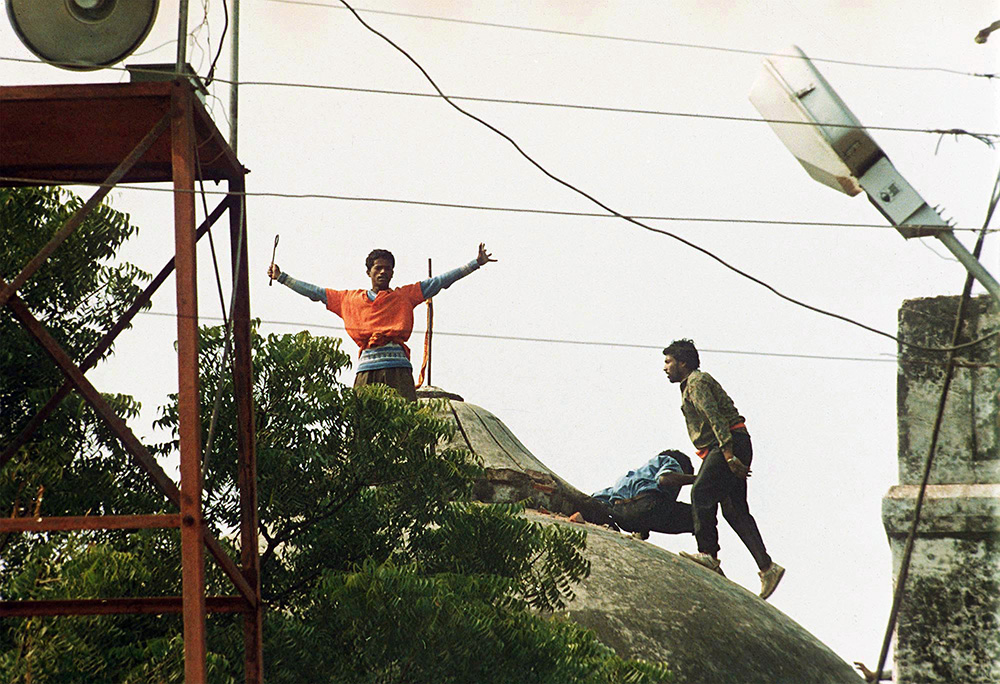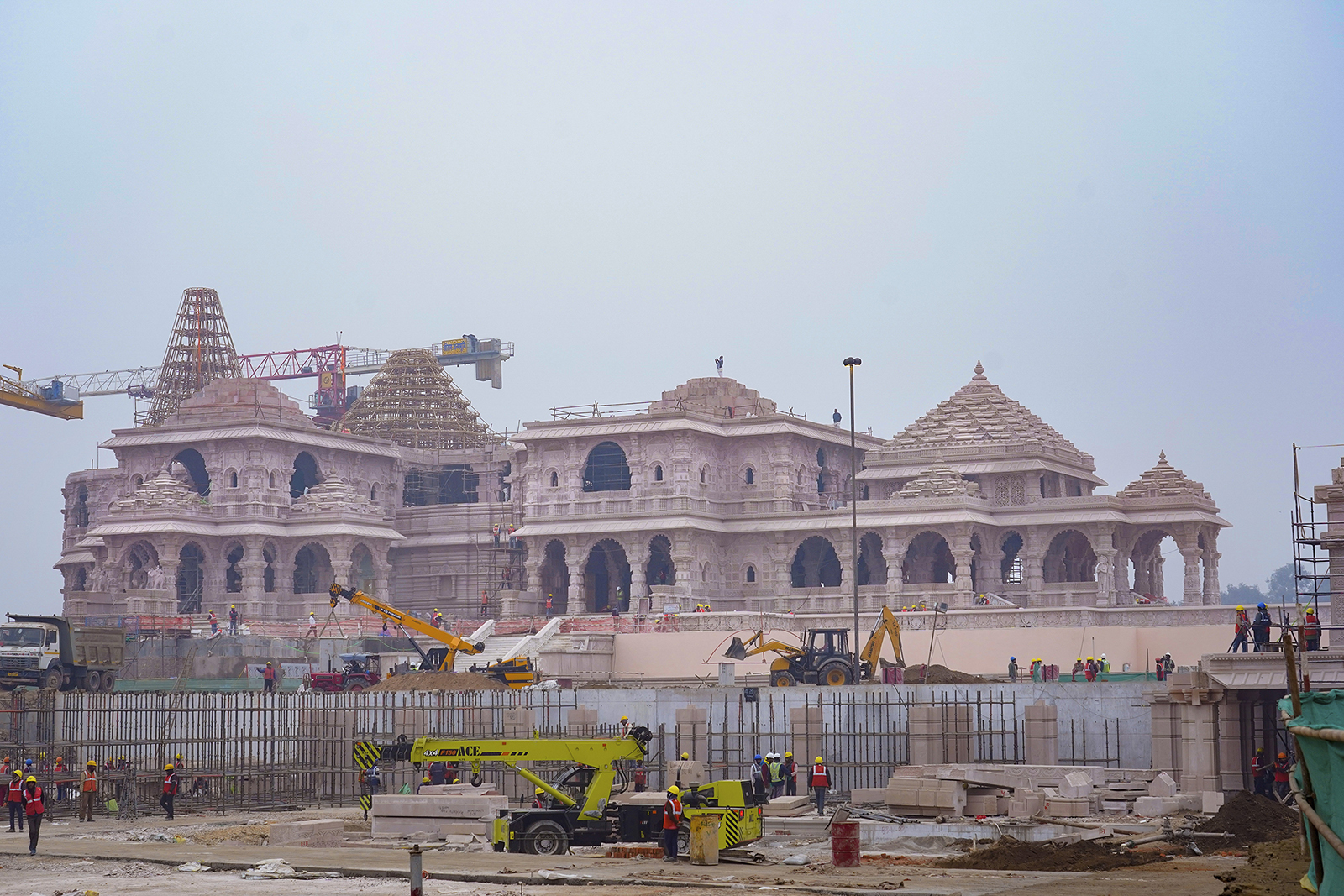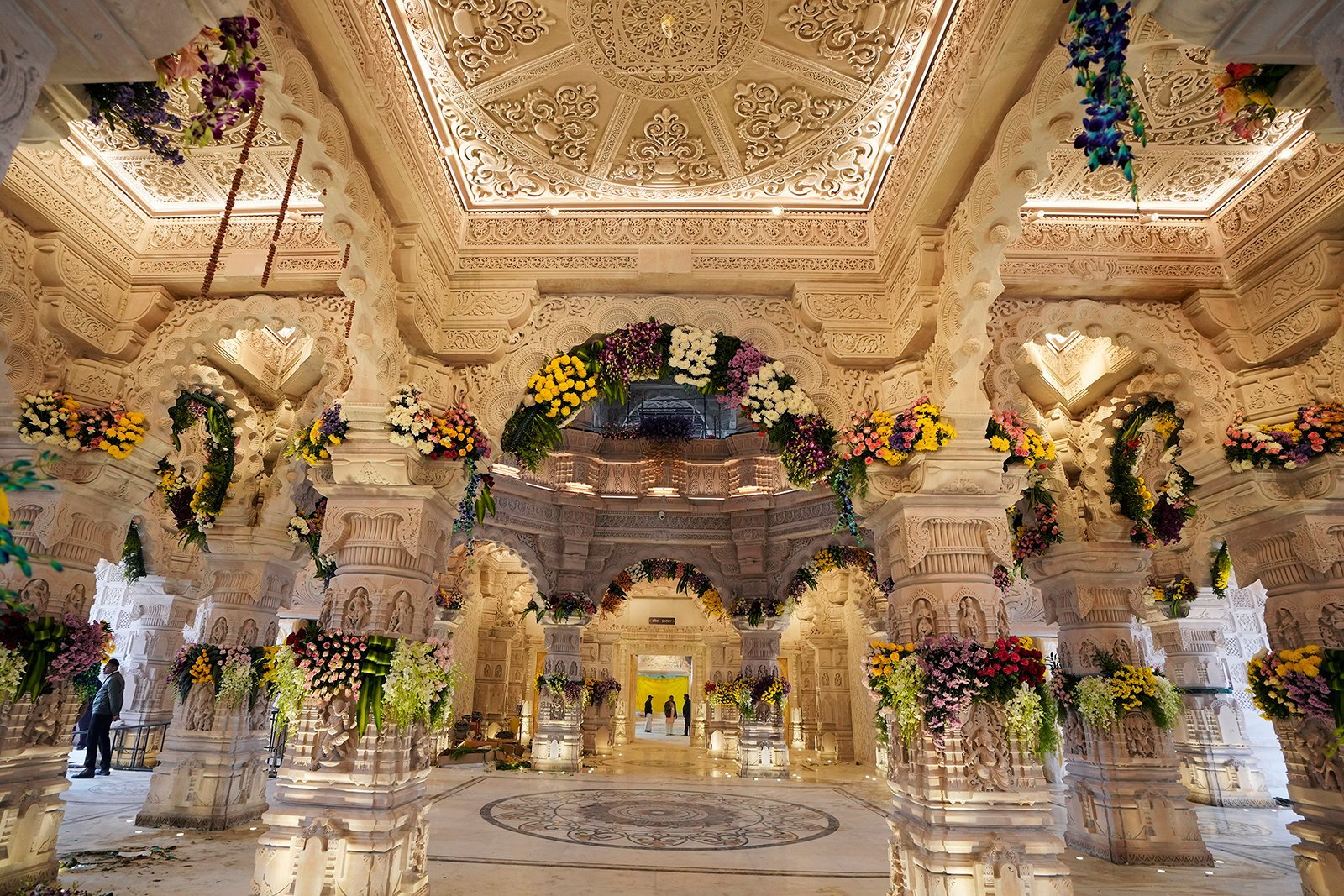(RNS) — The consecration of a temple to the Hindu god Ram, in the northern Indian city said to be his birthplace, will be marked with state-sponsored fanfare this weekend, completing a yearslong transformation of a once sleepy village into a bustling destination for pilgrims and tourists.
But in the United States, the events surrounding the triumphant inauguration of the temple are seen as a chance to put Hindu Americans on the map as well. From Tesla car rallies to Times Square watch parties, American Hindus are celebrating the idol’s installation with a fervent long-distance patriotism.
“This is our time,” said Dinesh Mojumder, founder of the Hindu Coalition USA, a group that is hosting a Times Square event with a guest list of more than 1,000 Hindus of Indian, Bangladeshi, Nepali and Guyanese descent. “We have to show that we are not weak, we are more strong, and we are united.”
For many Hindus in the diaspora, the temple’s official opening will strengthen ties between Hindus.
“On a global level, we’re in an age now that we’re trying to reclaim indigenous rights,” said Mihir Meghani, a Californian who co-founded the Hindu American Foundation. “When I look at Hindu civilization, it hasn’t had the opportunity to really control its destiny for a long time. What I see here is a civilization that’s rising.”
Such talk is unnerving to some in India and the South Asian diaspora, who see in the temple a symbol of the Hindu nationalism that has fueled discrimination against Muslims and other minorities in the country and that has been used by Indian Prime Minister Narendra Modi to cement his political dominance.
Yet the opening of the temple comes after a legal battle that lasted more than 70 years over questions about the historical evidence of Ram’s birth being at the exact location of the Babri Masjid Mosque, and whether remnants found under the mosque ever belonged to a Ram temple. Conflict over the site has resulted in street battles as well: In 1992, a group of Hindus led a mob in destroying the 16th-century Babri Masjid that stood on the site. Riots followed, killing thousands.

Hindu fundamentalists stand on top of one of the three domes of the Babri mosque in Ayodhya, India, on Dec. 06, 1992, after storming the secured site. Thousands of Hindu extremists razed the 430-year old Muslim mosque to the ground to clear a site for a proposed temple. (AP Photo/Udo Weitz)
In the early 2000s, a study by the Archaeological Society of India supported the idea that a temple structure indeed existed underneath the mosque. In 2019, the Indian Supreme Court solidified Hindu ownership, allowing construction to begin on the disputed land.
But Meghani said that the temple’s consecration will allow Indians to move on from this history. “While there may have been conflict in the past, this is the end of that process,” said Meghani. “And the process now is more about everyone coming together, the Hindu community and all people of India.”
He also notes that Lord Ram is not only a god for Hindus to revere, but a human figure whose honorable actions, described in the sacred epic Ramayana, provide guidance to people of all Dharmic faiths, which include Buddhism and Sikhism, and make him relatable to anyone. Ram’s adventures — the Ramayana tells of him rescuing his wife, Sita, from the half-demon Ravana — put forth practical lessons in how to be a brother, husband and son.
Other American Hindu leaders see in the temple’s consecration a chance for a new beginning for their community.
Ravi Vaidyanaat Sivacharya of the Hindu Temple Society of North America was one of the 70 experts called upon to investigate whether Ram was indeed a real figure who was born in Ayodhya. A scholar in agama, a Hindu scriptural tradition, Vaidyanaat joined astronomers from the Indian Space Research Organization and Vedic and Puranic Hinduism specialists who reported to the Supreme Court that there was sufficient evidence, based on the Ramayana.
“It was a dream realized,” said Vaidyanaat of the temple’s consecration. “Truth has won.”
But as Vaidyanaat helps his temple in Queens, New York, host a three-day celebration this weekend, he doesn’t plan to talk about his connection to the project. He will focus instead on connecting Hindus living in New York with the temple, which he sees as an equivalent to Jews’ devotion to Jerusalem or Muslims’ to Mecca.

Construction crews work on Ram Mandir, a Hindu temple dedicated to Lord Ram in Ayodhya, India, Tuesday, Jan. 16, 2024. Frenzied preparations are underway in this northern Indian city to mark the opening of the grand temple for Lord Ram, one of Hinduism’s most revered deities, culminating a decades-long Hindu nationalist pledge. (AP Photo/Deepak Sharma)
The second and third generations of Hindu Americans, said Vaidyanaat, might not understand the history of the site. Instead they will see the fruits of the seeds his generation planted.
But Jai Bansal of the Vishwa Hindu Parishad of America, the U.S. branch of a powerful Hindu organization in India, says it is the duty of those who remember the struggle to build the temple to relate the facts to a new generation. Otherwise, he said, some may be swayed by media calling it an anti-Muslim event.
He regards the history of the Ayodhya site instead as proof of the historic oppression of Hindus. “Wherever you go in India, you will come across remnants of some temple, either laid to waste, or buried under a mosque,” said Bansal. “And that is fundamentally a reflection of the thousand-year history of slavery we have endured under the Islamic, British and Portuguese rule.”
Even with Hindus making up more than 80% of the Indian population, he noted, it took more than 70 years to reclaim the birthplace of Ram.
“I think every Hindu, who truly in their heart of hearts believes in Hindu dharma, should feel a sense of this historical event,” he added. “We should have a silent resolve to ourselves saying, ‘never again.’ Never again will we let this happen to us.”
Bansal’s organization offered a month of educational webinars on the temple, recounting history that he said is vital for Hindus’ cultural and spiritual identity. “Most of us don’t know, he says, the extent of the sacrifices it took to get here.”
The Ram temple represents more than just a legal victory or a triumph of religious architecture, he said. It symbolizes the resilience of the Hindu people.
“Now that we have gained it, we think this is the harbinger of something different,” he said. “It’s the reawakening of Hindu culture, civilization and consciousness about what has been lost, what has been buried under dirt all these years.”

